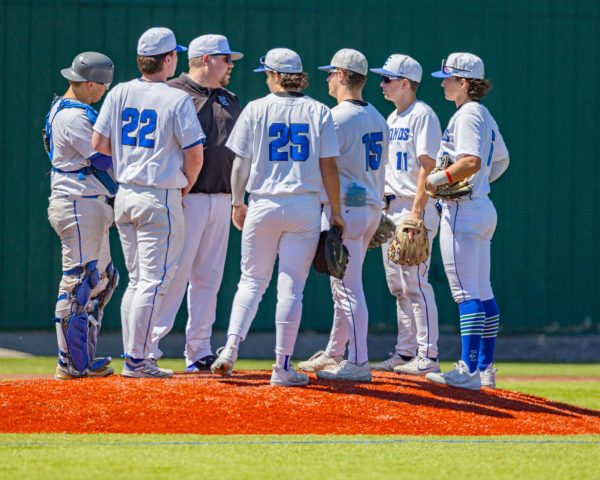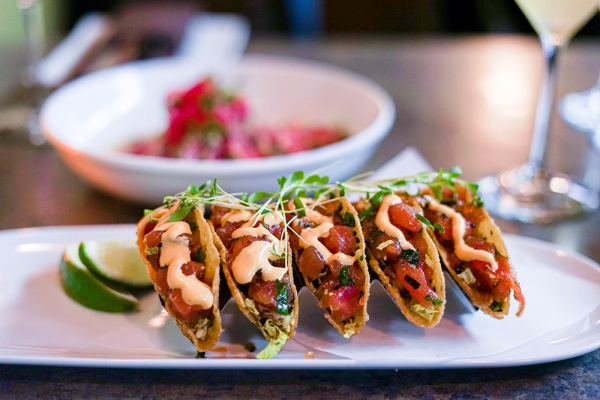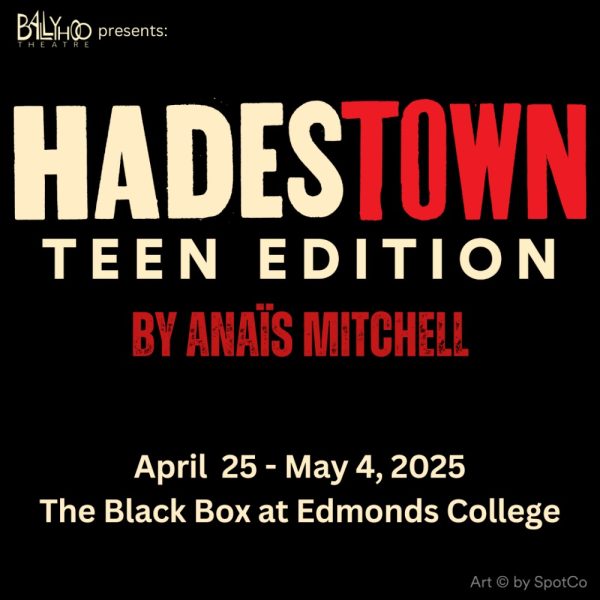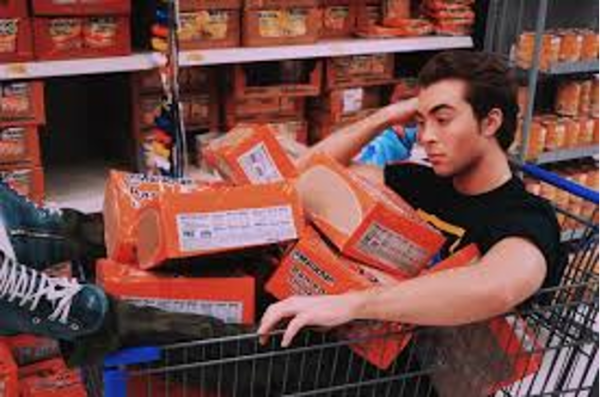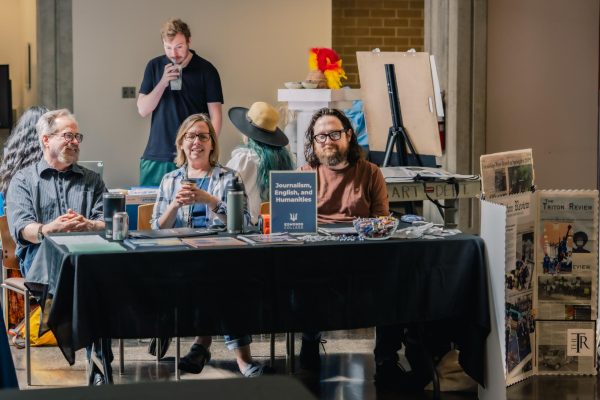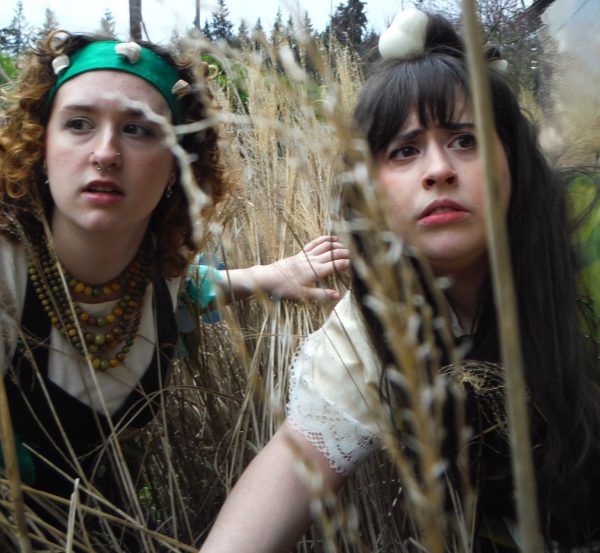Local archaeology site uncovers racist relics
The tarnished surface of the platter could not hide the obvious blackface staring back at you, with the words “Coon Chicken” in bold letters written across his teeth.
On November 16 last quarter, the Edmonds Community College anthropology department held a three-hour-long service learning volunteer opportunity at the anthropology lab.
A large number of students attended this lab analysis of archaeological artifacts discovered on July 6, 2016, by Eric and Staci Adman, landowners of an adjacent property in Kenmore.
Dr. Thomas Murphy, chair of the anthropology department, was alerted to the find by staff member Kacie McCarty. The Admans found these artifacts in a stream near their property where a tree had been uprooted.
Dr. Murphy and a team performed an initial inspection of the site on July 11, 2016. This visit revealed that the objects resembled each other, were from the 1920s to 1960s and were likely part of a larger collection one would see in a commercial setting.
He initially thought the blackface was Little Sambo until he did a Google search and found a blackface image with the words “Coon Chicken” written on the teeth.
These factors and concerns about what could potentially be a legal archaeological site led to Dr. Murphy’s decision to follow standard procedure required by law when working with archaeology.
“It’s over 50 years old and is something of community-level importance,” he explained.
Dr. Murphy, whose specialty is cultural anthropology, has supervised and collaborated with archaeologists on projects taught archaeology classes. He admitted this was not his field of expertise, so he contacted fellow anthropology faculty member Dr. Neal Endacott.
Together they called the Department of Archaeology and Historical Preservation (DAHP) to let them know what was going on and get advice on how to best handle the situation. The DAHP recommended they do a site report and record what they see on the surface.
Dr. Murphy took his team, including Dr. Endacott, McCarty and a former staff member Luke. They mapped the site, created the site report, filed it with DAHP and were assigned an official Washington State, King County site number 45KI01292. DAHP also informed the team that the site did not appear to be eligible for a historical register, so the team could “surface collect” without a permit as long as they had permission from the landowner, which the Admans took care of.
The team began surface collection of artifacts on September 17, 2016 under Dr. Murphy’s leadership. Murphy and his fellow faculty are heavily involved in the community in various ways, and on many levels.
Murphy had worked with Eric Adman through the SnoKing Watershed Council on projects such as salmon habitat restorations and water quality monitoring. Dr. Murphy noted both “Gem Baldwin and Dr. Endacott share a similar philosophy; they really want to be involved in the community and make a difference. That’s why we make a good team – because we are committed to that involvement in the community.”
Dr. Murphy already included the find in his curriculum for cultural anthropology. He assigned his cultural anthropology students to read a research paper written in 2009 by UW student Catherine Roth on the Coon Chicken Inn. The paper is available at http://depts.washington.edu/civilr/coon_chicken.htm.
Dr. Murphy chose to use Roth’s paper because he really liked the way the student told the story. In the paper, Roth talks about the National Association for the Advancement of Colored People (NAACP), the cultural context of it relative to Seattle and the racial exclusion politics that were in place in the north end of the greater Seattle area.
Dr. Murphy stresses the fact that this happened 50 years ago and most people don’t know about it.
The project is already a part of EdCC’s service learning education, which will be involved in the next step of initial cataloguing of artifacts. If the landowners will let the department keep the artifacts, they would become part of the college’s anthropology collection so students will continue to benefit from the learning opportunity to use those materials to talk about issues that affect us today, in real time.
Dr. Murphy pointed out that using artifacts found in the local area would have a more profound effect on students instead of trying to teach the same class using something found in some other state.
“Using this plate found not very far from our campus that tells the story of this restaurant is much more powerful than me assigning an article about something that happened in Georgia or Alabama. It brings it home literally in a very powerful way.”
He has other stories, about a place called Japanese Gulch in Mukilteo, where the local white and Japanese communities decided to work together to fight a corporation so they could get higher wages for everyone.
“Those stories have to be told too, and we can tell both stories at the same time.” He is very excited and honored to be able to teach about this. He admitted he had never heard the story of the Coon Chicken Inn until he saw the blackface image on the broken plate.
“History is repeating itself,” Dr. Murphy warned, “and makes it important that we teach it. I’d like to think that through education we could change things.” He is positive that giving students the opportunity would help in breaking down barriers of prejudice and racism that still exist.
Shoreline Historical Society Project Manager Victoria Stiles explained some history about the Coon Chicken Inn, which was a chain of family restaurants first opened in Utah in 1925.
The Seattle location opened in the Lake City area in 1929, and a third opened in Portland, Oregon. A fourth was set to open in Spokane, Washington, but that never happened.
“It was family-oriented dining for white families,” Stiles said. “That restaurant opened during Prohibition so there was no alcohol served; the Coon Chicken Inn was not a speakeasy.”
When Prohibition ended the owner, Maxon Lester Graham, made an addition to the restaurant. He placed an entrance around the side of the building and called it Club Cotton.
“Graham probably called it the Club Cotton to avoid copyright infringement,” Stiles said. “It was a dance place, an adult place where you could bring liquor.”
Club Cotton attracted a huge clientele during this time, and many popular bands of the time were invited to perform there. They survived the Depression, and people continued to frequent the establishment.
At the end of the second World War the Northwest’s population composition changed dramatically, bringing into the area many different races and cultures from across the country and the world to work in aerospace manufacturing companies, such as Boeing.
According to Stiles, as a result of all this change it became apparent that, “there was no place for such a thing as a restaurant where you walked in through the mouth of a black person.” The Coon Chicken Inns in both Lake City and Portland closed in 1949.
The focus of the Shoreline Historical Society is Native American history and the oppression of the local tribes since the United States government took over the region in the early 1800s.
There was a huge publicity effort to make people think that Native Americans did not exist anymore. Stiles is diligent and meticulous in her role as project manager at the museum.
She said, “When you’re a citizen of this country, you should be able to have as much freedom as the next person, so your skin color should not make any difference but oh boy, it sure does affect people visually.”
The message is very clear. In order to progress as individuals, as a community, as a nation, we must bring these issues to the forefront of our conscious to be discussed and dissected, so we can birth and implement real solutions that will have long-term positive effects.


